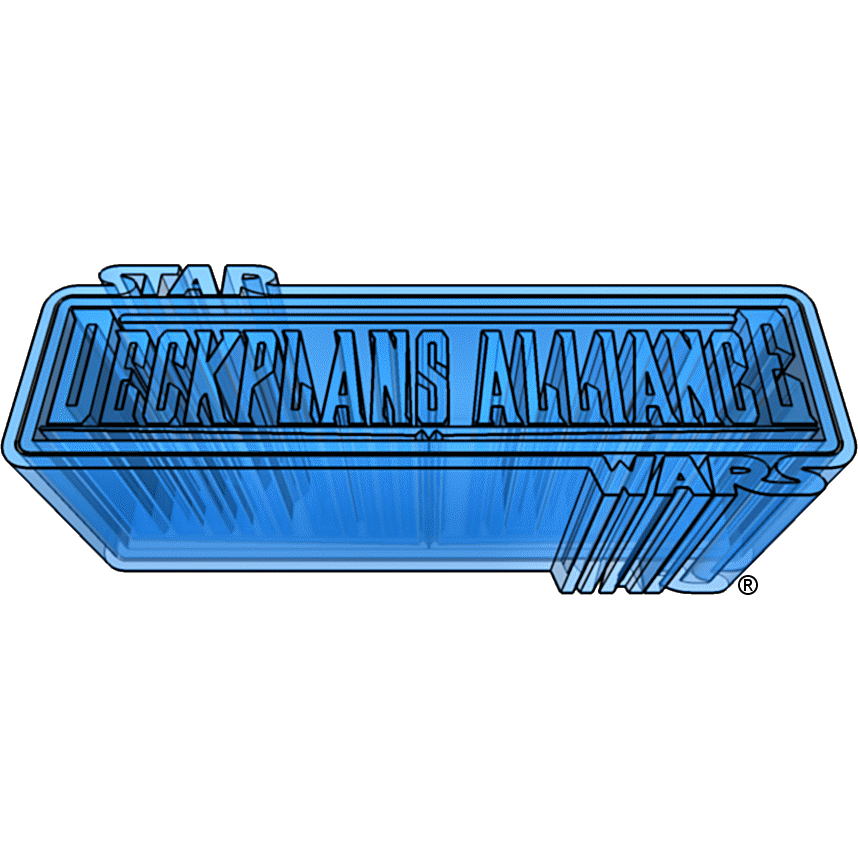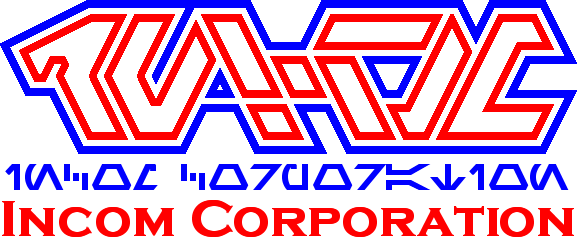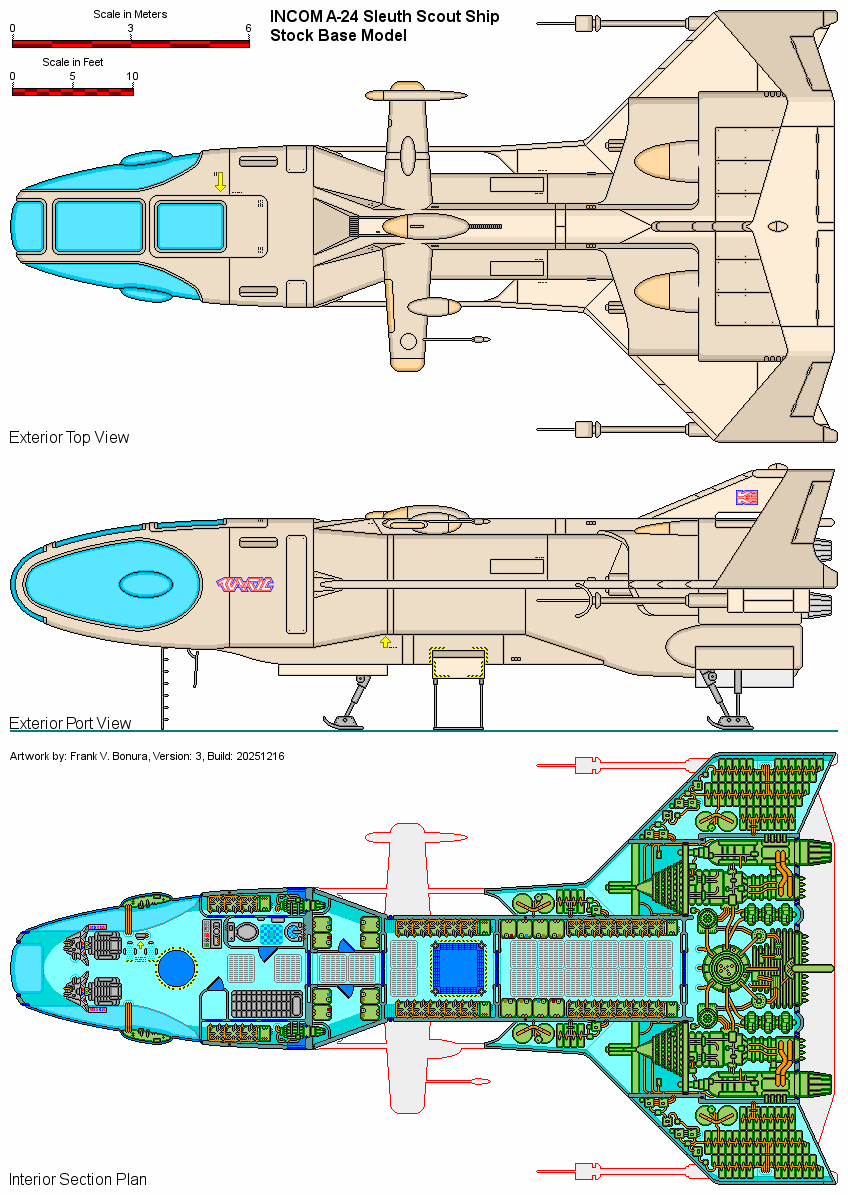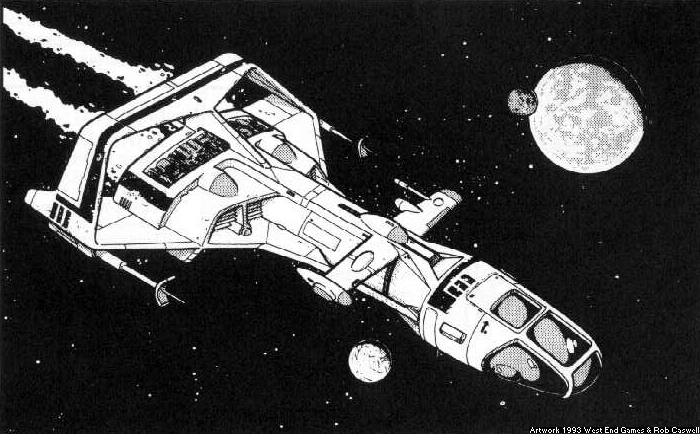

A joint effort project developed by Frank V Bonura, Ed Obarowski, Luke Roberts, Charles McNeill, the membership of the Star Wars® Deckplans Alliance, and the membership of The Rancor Pit Forum.

Capsule: The A-24 was designed and released during the heyday of INCOM. The A-24 is a scout ship, capable of carrying only two persons: a single pilot and passenger; an astromech droid may serve as co-pilot. While older than more popular scout ships, the A-24 has excellent maneuverability and sublight speed for a vehicle of this class.
— Louis J. Prosperi, with Greg Farshtey, and Bill Smith,The interior of the A-24 Sleuth is mostly linear with compartments running the length of the ship.
The compartment has a maximum headroom of 2.44 meters (8 feet). The cockpit is entered from the floor hatch and a drop-down ladder that extends to the ground, the top hatch of the ship, or from riding up the cargo elevator and proceeding forward. The cockpit contains two fully functional control stations. All ship functions can be performed from either the pilot (port) or copilot (starboard) position. If an astromech droid is being used as a co-pilot, the droid may lock in, link up, and utilize the droid station located behind the copilot station.
The Forward Habitation Module also can serve as an escape pod in the event of an emergency. The Forward Habitation Module separates via explosive charges from the Storage Module of the ship.
The compartment houses the Starboard Repulsorlift Array, and the Escape Pod Thruster of the Forward Habitation Module. Access to the compartment can be obtained via internal removable service covers, and an external removable access cover for repairs and maintenance. A similar mirrored compartment resides on the port side of the ship.
The Galley is equipped with a basic food preparation console. The console can be removed and slid out of the way to provide access to the a service cover for maintenance/repair of the Starboard Repulsorlift Array.
The Head is equipped with a toilet, shower pad with floor drain, and sink. The shower wand, hose and other toiletries are stored in the two wall cabinets. This compartment can be sealed and is space-rated if the Forward Habitation Module needs to be exposed to hard vacuum. The far wall has two removable service covers to provide access for maintenance/repair of the Starboard Repulsorlift Array, and the Starboard Escape Pod Thruster.
The area serves many functions, similar to a common room, as well as providing access to adjacent compartments. The two floor grates provide access to the ship's life support equipment and the nadir/ventral Repulsorlift Array for maintenance/repair.
The compartment can be sealed and is space-rated if the Forward Habitation Module needs to be exposed to hard vacuum. The back of the closet has a service cover for maintenance/repair of the Port Repulsorlift Array.
The two beds measure 1.83 m x .61 m (6' x 2') each. Larger occupants will require a bedroll and will have to sleep on the adjacent deck. The beds can be folded up or removed entirely to provide access to the a service covers for maintenance/repair of the Port Repulsorlift Array and port escape pod thruster.
The compartment has a maximum headroom of 2.11 meters (6 feet, 11 inches). Located here are food, and water storage tanks for the food processor system. The area is partitioned to form two large storage rooms for space suits and other mission-specific equipment and a central corridor for travel forward and aft.
Life support, and repulsorlift equipment are located under the deck of this compartment and accessed by the floor grates.
The compartment has a maximum headroom of 2.11 meters (6 feet, 11 inches). Housed here are the ship's Port and Starboard Repulsorlift Arrays, and the Cargo Lift. The Lift is rated at 2 metric tons and can handle 1 meter cube cargo containers. The compartment functions as a fully equipped airlock. The two floor grates provide access to the ship's life support equipment and the nadir/ventral Repulsorlift Arrays for maintenance/repair.
The compartment has a maximum headroom of 2.11 meters (6 feet, 11 inches), provides access to the Airlock Module forward, and the Mechanical Room aft. Housed here are food, and water storage tanks for the food processor system, the ship's Port and Starboard Repulsorlift Arrays, and the Main Cargo Hold.
The Cargo hold is rated for 2 metric tons of cargo.
All payloads must be secured and balanced port-to-starboard and fore-to-aft before operating the space transport.
The twelve floor grates provide access to the ship's life support equipment, the nadir/ventral Repulsorlift Arrays, the fuel tanks, and the fuel management systems for maintenance/repair.
The Compartment has a maximum headroom of 2.11 meters (6 feet, 11 inches). Housed here are the ship's main mechanical systems: Power Core, Hyperdrive (main and backup), Sublight Drive (fusial thrust), and Defence Shields (generators, controllers, and projectors).

The images of the A-24 we see in "Wanted by Cracken", and "Galaxy Guide 10: Bounty Hunters" show the Sleuth with Rebel Alliance markings. The above images are examples of how the Rebellion would paint the A-24 for military applications. I would like to thank Ed Obarowski for pointing out this detail and helping me to develop this section.

The only drawing of the A-24 Sleuth produced by West End Games appeared in “Wanted by Cracken”, page 81, and “Galaxy Guide 10: Bounty Hunters”, page 111 (Red Fang). The scout ship was drawn by the talents of Rob Caswell. After careful measurement, I realized the drawing was not a perspective but isometric (parallel projection) so the front of the ship was actually larger than it would be on a perspective drawing. Caswell's work mostly shows the top half of the ship, so I had to use my imagination as much as possible for the underside. Being the A-24 is made by INCOM, I used the T-65 (X-Wing) for influences when designing the nadir/ventral side of the ship, its landing gear, and some of its internal mechanical systems.
Following our design philosophy, to change as little as possible when correcting mistakes, we realized the size of the original ship was too small to fit the published game stats. By changing only one metric “Length: 14 meters”, increasing it by 50% to 21 meters, all the other room considerations, and problems making the stats work were solved.
— Frank V Bonura